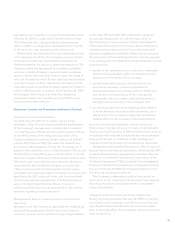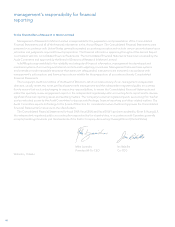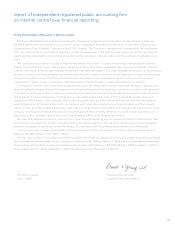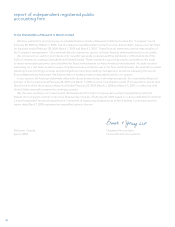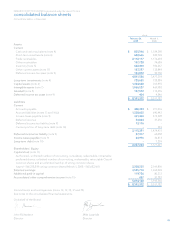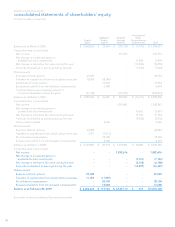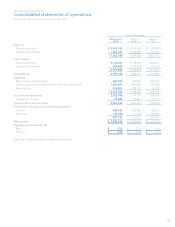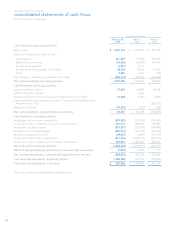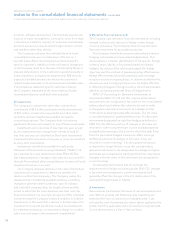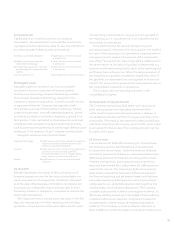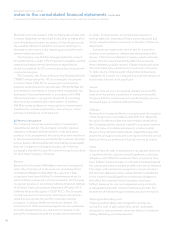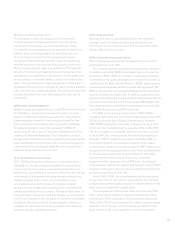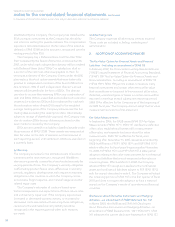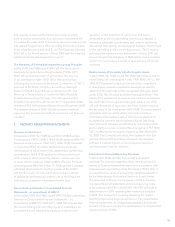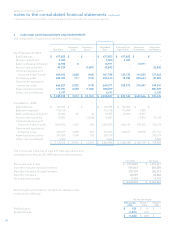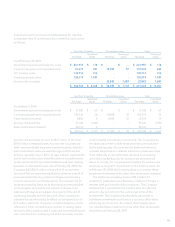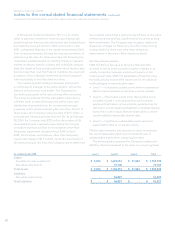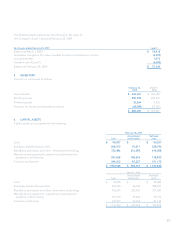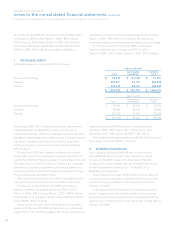Blackberry 2009 Annual Report Download - page 56
Download and view the complete annual report
Please find page 56 of the 2009 Blackberry annual report below. You can navigate through the pages in the report by either clicking on the pages listed below, or by using the keyword search tool below to find specific information within the annual report.54
RESEARCH IN MOTION LIMITED
notes to the consolidated financial statements continued
In thousands of United States dollars, except share and per share data, and except as otherwise indicated
(i) Derivative financial instruments
The Company uses derivative financial instruments, including
forward contracts and options, to hedge certain foreign
currency exposures. The Company does not use derivative
financial instruments for speculative purposes.
The Company formally documents relationships between
hedging instruments and associated hedged items. This
documentation includes: identification of the specific foreign
currency asset, liability or forecasted transaction being
hedged; the nature of the risk being hedged; the hedge
objective; and the method of assessing hedge effectiveness.
Hedge effectiveness is formally assessed, both at hedge
inception and on an ongoing basis, to determine whether the
derivatives used in hedging transactions are highly effective
in offsetting changes in foreign currency denominated assets,
liabilities and anticipated cash flows of hedged items.
SFAS 133 Accounting for Derivative Instruments, as
amended by SFAS 137, 138 and 149, requires all derivative
instruments to be recognized at fair value on the consolidated
balance sheet and outlines the criteria to be met in order
to designate a derivative instrument as a hedge and the
methods for evaluating hedge effectiveness. The fair value
is calculated based on quoted market prices. For derivative
instruments designated as cash flow hedges as defined in
SFAS 133, the effective portion of changes in fair value are
recorded in other comprehensive income and subsequently
reclassified to earnings in the period in which the cash flows
from the associated hedged transaction affect earnings.
Ineffective portions of changes in fair value, if any, are
recorded in current earnings. If an anticipated transaction
is deemed no longer likely to occur, the corresponding
derivative instrument is de-designated as a hedge and gains
and losses are recognized in earnings at that time. Any future
changes in the fair value of the instrument are recognized in
current earnings.
For derivative instruments that do not meet the
requirements for hedge accounting under SFAS 133, changes
in fair value are recognized in current earnings and will
generally offset the changes in the U.S. dollar value of the
associated hedged asset or liability.
(j) Inventories
Raw materials are stated at the lower of cost and replacement
cost. Work in process and finished goods inventories are
stated at the lower of cost and net realizable value. Cost
includes the cost of materials plus direct labour applied to the
product and the applicable share of manufacturing overhead.
Cost is determined on a first-in-first-out basis.
products, software and services. The Company expects the
majority of trade receivables to continue to come from large
customers as it sells the majority of its devices and software
products and service relay access through network carriers
and resellers rather than directly.
The Company evaluates the collectability of its trade
receivables based upon a combination of factors on a
periodic basis. When the Company becomes aware of a
specific customer’s inability to meet its financial obligations
to the Company (such as in the case of bankruptcy filings or
material deterioration in the customer’s operating results or
financial position, and payment experiences), RIM records
a specific bad debt provision to reduce the customer’s
related trade receivable to its estimated net realizable value.
If circumstances related to specific customers change,
the Company’s estimates of the recoverability of trade
receivables balances could be further adjusted.
(h) Investments
The Company’s investments, other than cost method
investments of $2.5 million and equity method investments
of $2.7 million, consist of money market and other debt
securities, and are classified as available-for-sale for
accounting purposes. The Company does not exercise
significant influence with respect to any of these investments.
Investments with maturities of less than one year, as well
as any investments that management intends to hold for
less than one year, are classified as Short-term investments.
Investments with maturities of one year or more are classified
as Long-term investments.
Investments classified as available-for-sale under
Statement of Financial Accounting Standards (“SFAS”) 115
are carried at fair value determined under SFAS 157 Fair
Value Measurements. Changes in fair value are accounted for
through Accumulated other comprehensive income until such
investments mature or are sold.
The Company assesses declines in the value of individual
investments for impairment to determine whether the
decline is other-than-temporary. The Company makes this
assessment by considering available evidence, including
changes in general market conditions, specific industry
and individual company data, the length of time and the
extent to which the fair value has been less than cost, the
financial condition, the near-term prospects of the individual
investment and the Company’s intent and ability to hold the
investments. In the event that a decline in the fair value of an
investment occurs and the decline in value is considered to
be other-than-temporary, an impairment charge is recorded
and a new cost basis in the investment is established.



